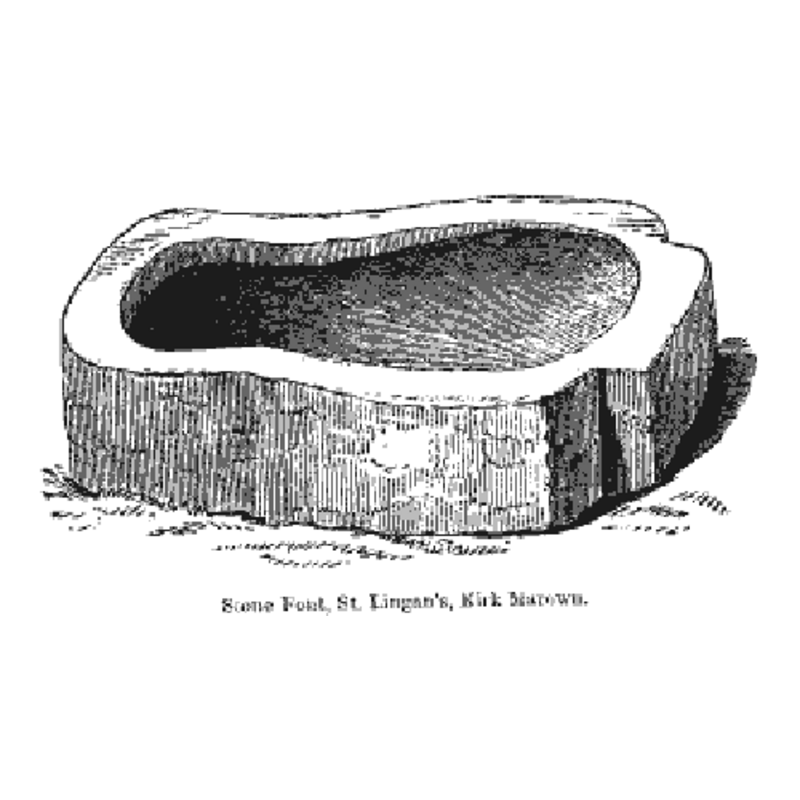Marown / Kirk Marown

Image copyright © [in the public domain]
PD
Results: 1 records
INFORMATION
FontID: 11460MAR
Object Type: Baptismal Font?
Church/Chapel: Church of St. Lingan / Keeill St. Lingan's
Church Patron Saints: St. Lingan
Country Name: England
Location: Isle of Man, Isle of Man
Directions to Site: Located in the private estate of Ballingan, near the crossroad between Marown and Castletown
Font Location in Church: In the NE angle of the ruins of the old church
Century and Period: 6th - 7th century, Early Christian
Cognate Fonts: perhaps the objects listed for Vielha No. 2 and Salle-les-Alpes No. 6
Font Notes:
Click to view
Noted in Oliver (1868) as one of a group of "rude stone vessels called 'fonts'", found in the 'Keills', a type of ecclesiastical building introduced in the middle of the 6th century in the Isle of Man: "the font [...] measures one foot eleven inches long, by ten and a half inches broad". The woodcut which illustrates the object shows a rounded oblong vessel not unlike the ones found in Vielha, in the Spanish Pyrenees [cf. Index entry for Vielha No. 2], or another such found in the region of Hautes-Alpes [cf. Index entry for Salle-les-Alpes No. 6]. Moore (1891?) cites Paul Bridson's notes on the Treen chapels of the parish of Marown (1861) which report "a font about 13 inches by 10 1/2 inches" at the north-east angle of the chapel of St. Lingan [NB: either Bridson or Moore must have erred on the length of the object, which is definitely more than double in length than it is in breadth -- we are therefore using Oliver's mneasurements]
MEDIUM AND MEASUREMENTS
Material: stone
Font Shape: other
Basin Interior Shape: other
Basin Exterior Shape: other
Trapezoidal Basin: 57.5 cm x 26.25 cm*
Notes on Measurements: * [given in Oliver (1868) as 1ft. 11in. by 10.5 in.]
REFERENCES
Moore, A.W., "Treen chapels in Marown", 3, Yn Lior Manninagh, [1891?], pp. 43-44; p. 43-44
Oliver, J.R., Antiquitates Manniae, or a collection of memoirs on the antiquities of the Isle of Man, London: Printed for the Manx Society, 1868